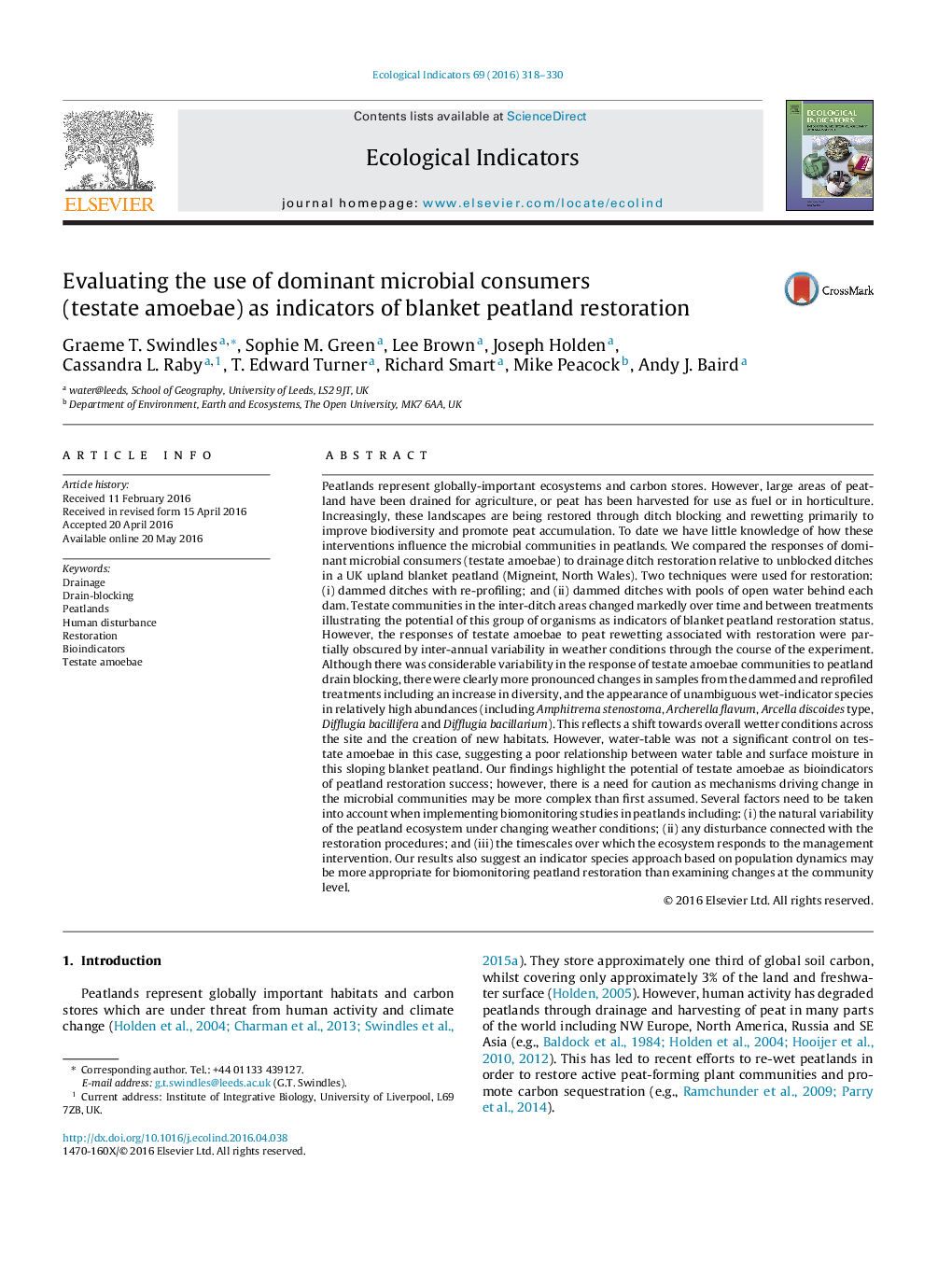| کد مقاله | کد نشریه | سال انتشار | مقاله انگلیسی | نسخه تمام متن |
|---|---|---|---|---|
| 6293234 | 1617133 | 2016 | 13 صفحه PDF | دانلود رایگان |
- Testate amoebae communities changed after ditch blocking in a blanket peatland.
- Significant drivers of change include type of ditch-blocking treatment and time.
- Pronounced changes in diversity across site relate to creation of new habitats.
- First appearance of key wet indicator taxa is after ditch blocking on the site.
- Water table is not controlling testate amoeba communities in this blanket peatland.
Peatlands represent globally-important ecosystems and carbon stores. However, large areas of peatland have been drained for agriculture, or peat has been harvested for use as fuel or in horticulture. Increasingly, these landscapes are being restored through ditch blocking and rewetting primarily to improve biodiversity and promote peat accumulation. To date we have little knowledge of how these interventions influence the microbial communities in peatlands. We compared the responses of dominant microbial consumers (testate amoebae) to drainage ditch restoration relative to unblocked ditches in a UK upland blanket peatland (Migneint, North Wales). Two techniques were used for restoration: (i) dammed ditches with re-profiling; and (ii) dammed ditches with pools of open water behind each dam. Testate communities in the inter-ditch areas changed markedly over time and between treatments illustrating the potential of this group of organisms as indicators of blanket peatland restoration status. However, the responses of testate amoebae to peat rewetting associated with restoration were partially obscured by inter-annual variability in weather conditions through the course of the experiment. Although there was considerable variability in the response of testate amoebae communities to peatland drain blocking, there were clearly more pronounced changes in samples from the dammed and reprofiled treatments including an increase in diversity, and the appearance of unambiguous wet-indicator species in relatively high abundances (including Amphitrema stenostoma, Archerella flavum, Arcella discoides type, Difflugia bacillifera and Difflugia bacillarium). This reflects a shift towards overall wetter conditions across the site and the creation of new habitats. However, water-table was not a significant control on testate amoebae in this case, suggesting a poor relationship between water table and surface moisture in this sloping blanket peatland. Our findings highlight the potential of testate amoebae as bioindicators of peatland restoration success; however, there is a need for caution as mechanisms driving change in the microbial communities may be more complex than first assumed. Several factors need to be taken into account when implementing biomonitoring studies in peatlands including: (i) the natural variability of the peatland ecosystem under changing weather conditions; (ii) any disturbance connected with the restoration procedures; and (iii) the timescales over which the ecosystem responds to the management intervention. Our results also suggest an indicator species approach based on population dynamics may be more appropriate for biomonitoring peatland restoration than examining changes at the community level.
Journal: Ecological Indicators - Volume 69, October 2016, Pages 318-330
